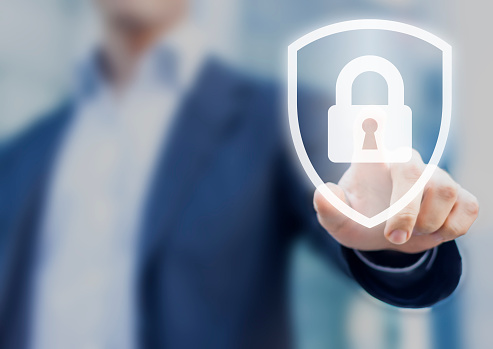Last Updated January 12, 2023.
The statistics and forecasts are frightening. According to the State of Cybercrime 2017 report, by the year 2021, cybercrime damage costs will reach $6 trillion annually. Cybercrime research by Dr. Michael McGuire shows that the cybercrime economy is unfortunately booming and estimates that in 2018, cybercrime will create over $1.5 trillion in profits for cybercriminals.
What is Cybercrime?
Cybercrimes are defined as crimes aimed at computers and computer networks. Below are some of the most common types of cybercrimes, along with cybersecurity tips that can help protect yourself and your personal information.
Phishing
What it is: Phishing uses fraudulent emails and websites to retrieve a user’s personal information. The emails and websites appear to be from reputable companies and while some are obviously suspicious, some can look so authentic that users can easily be deceived if they are not careful.
How to protect yourself: Never click on an email unless you are certain it is legitimate. Look for typos or grammatical mistakes or a logo that looks slightly different than the genuine one. Be cautious of any email that requests confidential, personal information such as your Social Security number or bank account numbers. Legitimate companies and financial institutions do not ask for this type of information through email. Also keep an eye out for shortened links that appear unusual. They may take you to a fake website.
Ransomware
What it is: Ransomware is a type of malicious software (malware) that infects a computer and encrypts data and files so the victim will be unable to access anything. Sometimes ransomware will be a result of a phishing attack. A user clicks on a link through a phishing email, allowing ransomware to take over. The cybercriminal will then hold the victim’s data for “ransom” and tell the person that they can receive access to their data only if they make a ransom payment. Even if a victim pays the ransom, the data may remain inaccessible.
How to protect yourself: The same prevention steps used for phishing can also help you stay protected against ransomware. To ensure that you can still access your data in the case of ransomware attack, be sure to have your data backed up.
Identity Theft
What it is: Identity theft is when a criminal obtains personal information from a victim and uses that information to impersonate that person. Some examples of personal information that could be used in identity theft include a Social Security number, financial account numbers, driver’s license number, passport number, and credit card numbers. Identity thieves can then use your information to steal money out of your bank accounts, obtain new bank accounts, credit cards, loans, or a Social Security card in your name, file fake tax returns in your name, and more.
How to protect yourself: There are several ways you can help protect yourself and your information against identity theft:
- Make your passwords strong. Combine numbers, letters and special characters in unique combinations. Avoid using the same password for every account and change your passwords often.
- Avoid oversharing. Watch what you share with individuals and on social media. Do not post your birthday, address, mother’s maiden name, or other personal information on social media, and double check that your privacy settings are strong. Never give your Social Security number or other private information to unfamiliar people who call you on the phone. Sometimes a scammer will pretend they are from your bank and ask you to “confirm your Social Security number.”
- Shred sensitive documents. Identity thieves look through the trash to find documents such as credit card receipts, bank account statements and utility bills. Be sure to shred any documents that contain personal information prior to disposing of them.
- Check your credit report. While checking your credit report won’t protect you against identity theft, it can help you identify if you’ve been a victim of it. You are entitled to one free credit report annually from each of the credit reporting bureaus, TransUnion, Experian and Equifax. Examine your report for unrecognizable names, accounts, addresses, Social Security numbers, or anything else that looks suspicious or fraudulent.
Think you have been a victim of identity theft? The first thing you should do is visit IdentityTheft.gov. The site, run by the Federal Trade Commission, can help you report and recover from identity theft. Based on the information you provide, the FTC will create a personal recovery plan for you. Read more about the importance of checking your credit report.
Cyberattacks are becoming more and more sophisticated. The best way to stay safe is to be proactive and take all the precautions you can to protect your personal information.
For additional tips on how to protect your computers and smartphones, read the Omni blog, 5 Cybercrime Prevention Tips.
The information provided in this blog is designed to provide helpful information. It is not meant to be a substitute for professional cybersecurity or legal advice.

Friendship Rewards Program
Refer a friend and get a $25 Omni Gift Card



